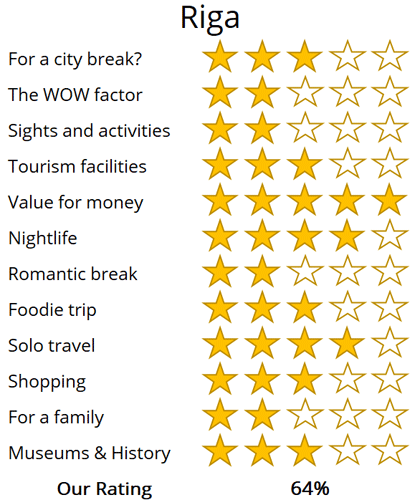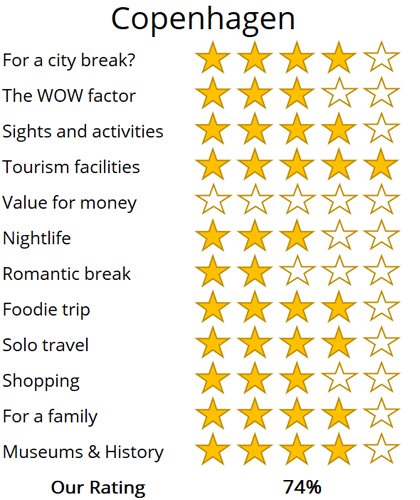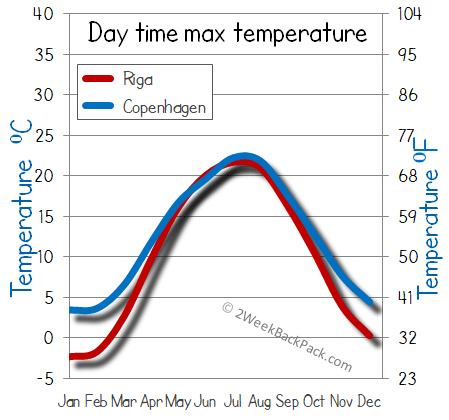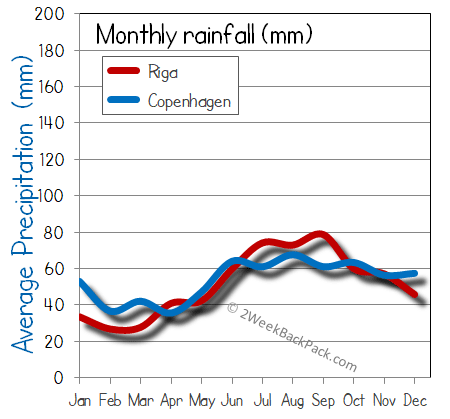WhereToGoForMyHoliday.com
The best destination comparison site!
WhereToGoForMyHoliday.com
The best destination comparison site!
Riga or Copenhagen, which is better for your holiday in 2024?
Riga and Copenhagen both offer unique and enticing experiences, but which one should you choose for your city break or holiday?
We understand your dilemma. There is an abundance of travel guides for both cities, but few actually comparing them, and advising you which is the better for your trip.
This article will provide our unbiased and independent views of Copenhagen and Riga, hopefully making your choice that little easier.
The article is structured into several sections, each of which can be directly accessed through the following links:
• Introduction to the cities
• Scores and ratings
• Which one should I, friends, or family visit?
• When to visit and weather
• Who is the city suited for?
• The perfect 48hours (with map)
• Tourism details (where to stay? airport details?)
Introduction to Copenhagen and Riga
Riga is a cool and collected Baltic capital Bridging both sides of the Daugava River estuary, its laid-back districts effortlessly flit from elegant Art Nouveau to stoic northern cottages built from wood.
But it's the Old Town area that really draws the eye. That's a web of cobbled alleys and hidden squares. Onion domes and Gothic belfries loom overhead in those parts, and hearty Latvian taverns slosh with beers and burst with dumplings in cellars beneath the flagstones.
Be warned that Riga has developed a reputation for stag and hen do weekending. If you travel during the summer, you're likely to encounter at least one group of boozed-up Brits.
But that shouldn't put you off. There are enough craft beer joints, bohemian cafes, and restaurants to go around. What's more, the old guild houses and haunting churches can balance the experience out with a dollop of culture and history.

The Swedish Gate one of the original gates in Riga’s fortifications
Sleek yet historic, gritty yet creative, Copenhagen fuses all the contradictions of Scandinavia in one outstanding city.
Yes, it's pricy. But your money buys quality in these parts, whether that's the crispy Danish pastry in the morning, the single-origin coffee beans, or those craft beers in the independent drinkeries.
Once the home of Hans Christian Andersen, the city's Indre By – the historic core – is all weaving cobbled lanes and flower-strewn cottages from centuries gone by. Meanwhile, over in districts like Christianshavn and Vesterbro, there's a buzz and energy about proceedings.
Don't forget that this capital is the veritable home of New Nordic cooking, putting foraged foods and mind-boggling flavour combos front and centre…

The canals and traditional houses of the Nyhavn district (Copenhagen) are always a favourite with tourists

Riga castle stands along the Daugava River
Copenhagen vs Riga: City Ratings
Summary
Where would I journey for a personal escape?
Copenhagen
Where would I send my parents for a memorable visit?
Copenhagen
Where's the ideal destination for my adventurous 19-year-old cousin?
Riga (Copenhagen is too expensive for him)
Where should my food-obsessed friend indulge their culinary passions?
Copenhagen
Note: The above comparisons are weather-independent and are based on travel during the most opportune times of the year. Details about the ideal travel seasons are elaborated upon later in this article.
In the sections that follow, you'll find a comprehensive comparison between these two fascinating cities. This includes recommendations on the duration of stay, the best times to visit, and tailored 48-hour itineraries for each city.
The final segment delves into practicalities for your travels, such as the best airport to fly into, the optimal districts for your accommodation, and insider tips, for when you come to explore the city.
We hope that you find all of this information useful, in planning your next exciting trip!
Destination details
How long to spend each city?
Riga might be the largest of the three Baltic capitals, but it's still a relatively small city. You can get from end to end in less than 40 minutes in the car, while the districts that are of interest to travellers are all within walking distance of each other.
That helps if you're only planning a short weekend away. Fly-in, fly-out city breaks are totally doable. In fact, a couple of days is what the majority of travellers come for.
If you want to explore for longer, you might want to come during the summertime. Not only can the winters here get downright cold (more on that later), but Riga is close to the some of the most celebrated beach resorts on the whole Baltic coast.
There are two sides to Copenhagen. There's the side that most visitors will aim to see, and that's all neatly packaged up for a quick two- or three-day break. Then there's the more local side. That can take weeks, or even months to enjoy to the fullest.
The upshot is that everything from short fly-in city breaks to longer jaunts are doable in the Danish capital – there's enough to keep you going, provided you've got the money to keep going!
In addition, it's worth thinking about what out-of-town excursions you might want to do from Copenhagen. These will inevitably add some time to the trip but are also downright tempting.
The likes of the ancient Viking capital of Roskilde, and the Swedish city of Malmo, are both on the menu.

The skyline of central Riga, with Riga cathedral at the centre

Tivoli Gardens theme park, in the centre of Copenhagen is the second oldest theme park in the world, and was original constructed in 1850 with the aim of "when the people are amusing themselves, they do not think about politics”
Copenhagen's weather often surprises visitors, being neither as bleak as they may assume nor as cold as it is frequently lumped together with its neighboring Scandinavian countries.
Summer is Copenhagen's most beloved season, and the city emerges from its casing of snow and ice to become a real outdoorsy gem. In the capital, this means the canal-side cafes of Christianshavn come alive with al fresco drinkers, and the breweries expand into leafy gardens. This is also the time to enjoy the famous Brygge Harbour Bath and the other marina swimming spots in full swing.
Spring and autumn are good alternatives, particularly if you're on a tight budget. Already high prices can soar in Copenhagen during the summer months.
Winter offers its own charm, peaking around Christmas when the Tivoli market fills the air with the aromas of gingerbread and spiced wine. January, although cooler, is more economical and often adorned with a captivating blanket of snow.
The Baltic summers are a tamer version of the warm season in the south of the continent. It's pleasant here when the temperature squeezes into the low 20s. Then, Riga goes al fresco in earnest.
The cafes on the main squares in the Riga Old Town buzz with life and chatter. There are students and backpackers sharing stories in the beer bar gardens at evening. Those, coupled with the enticing beaches of Jūrmala, are all reasons to plan to arrive sometime between June and September.
Winter in this corner of the continent can be cold. Really cold. It's not uncommon to see whole weeks go by without the thermometers passing single figures, or even positive numbers! Snow is normal, too, so it's wise to pack underlayers and good boots to hit the sightseeing trail anytime from November onwards.
Riga does well to distil rich Baltic history, a touch of hedonism, and authentic culture into a bitesize destination. With a population of under 650,000, you're not going to have to navigate a colossal megacity to get stuck into the action here.
You can spend most of your time walking from sight to sight, and enjoy relaxed dining and nightlife scenes to boot. It's one for the more chilled traveller.
The flip side of all that is that Riga isn't some bucket-list-busting capital. It's not got huge, world-famous sights. Instead, it's about enjoying the atmosphere, the regional food, and the intriguing merchant heritage of the place. You also might want to steer clear of the city if you hate the sight of stag and hen dos. They are rampant between June and August especially.
Copenhagen is tailor-made for creative, 30s-something city slickers. Bohemian cafes meet cutting-edge beer halls and restaurants that are breaking the mould, while workshops, design studios, and galleries cram the old town. If you're culturally engaged and enjoy places that fuse the old and the new, you could hardly do any better.
Copenhagen is famously expensive. Expect to pay around the 60kr mark (€8/$9) for a beer in most places – and even that's a decent deal! Hotels will cost a lot, no matter the season, and eating out is off the cards for anyone on a shoestring budget.
You can mitigate that if you picnic and dodge the pubs, but it's not really the place for travelers watching the pennies.

House of the Blackheads in Riga

Grand Rosenborg Castle, was built as a summer residence by Frederik II in 1624, and today houses the royal treasury and displays the Danish crowns
Hop between the charming plazas and Art Nouveau neighbourhoods of Riga with help from this curated itinerary. It lasts two days and includes most of the mainstream sights and some hidden extras for good measure:
Day 1: Breeze straight into the Riga Old Town. This medieval maze of a district is a fairy-tale place to be. It's also got a glut of sights. Start on the square topped by Saint Peter's Church. The oldest Christian building in the city, it's been rebuilt and reconstructed many a time.
You can scale the 120 or so metres to the top of the spire to get 360-degree views of the river, the capital, and even the Baltic coast. Back on ground level and a few streets over, you can see beautiful Town Hall Square. The most eye-catching building in the city looms on one side.
It's the so-called House of the Blackheads, where rich bachelor merchants held court for several hundred years. Delve inside for exhibits that unravel the enthralling past of the city since the age of the Hanseatic League.
Move northwards through Dome Square to have sunny lunches under the handsome cathedral building. Then push on to Riga Castle. First raised in 1330, it's gilded with additions that were built by the Swedish invaders of Latvia.
As evening closes in, you could opt to join the famous Riga Pub Crawl. They hit a number of underground Latvian taverns and then a pumping club.

The cobbled streets of Riga’s old quarter
Day 2: Hangover or not, you should rise early and make for the western area of Miera Iela. The cracked-plaster façades of the old buildings there herald what's surely the most hipster and creative corner of the city. Students and young professionals are everywhere, and there are some top brunch spots to kick start your morning. Then bear eastwards, back towards the Old Town.
On the way, you'll have to navigate Centrs district. Your first pitstop should be Alberta 12, where a grand edifice decorated with statues of nymphs and floral motifs commands the attention. It's one of the finest examples of the Art Nouveau style for which Riga is famous. Inside, you'll even find the Riga Art Nouveau Museum, which chronicles the architectural and design style from the turn of the century onwards.
Lunch can be had in the new town area to the south – Dzirnavu Iela especially has some charming café-bars and great shopping. The pretty walking paths of Vermane Garden can be perfect for an afternoon stroll if the sun is shining. They will take you all the way to the vibrant Pilsetas kanals garden, the home of the town's padlock-covered love bridge that's in good proximity to some hearty Old Town taverns for dinner.

The freedom Monument – the three stars represent the three regions in Latvia

The Art Nouveau on the Alberta 12
Copenhagen offers so much for a fun-packed 48 hours. Below is an interactive tour map - day 1 is highlighted in green and day 2 in yellow.
Day 1: Begin the first day in the Rådhuspladsen, where the ochre-tinged walls of the City Hall dominate the skyline. This is a beating hub of the city, and you might find concert stages or markets taking place on the plaza. The bustling shopping street of Strøget starts here. Hit that to move between high-street retailers and lively pubs. The walk will take you all the way to Nyhavn.
This is a charming, historic area with 17th-century canals. The painted houses are a favourite with photographers, and you can opt to do a canal boat tour from the docks. Lunchtime is over in the Bridge Street Kitchen. Sprawling across Greenlandic Trade Square, it's a casual food mecca, with hotdogs mixing with falafel pitas and sourdough pizza breads.
Full? Good – Christiania awaits. This gritty artist community come squat is a unique bohemian commune. There are some pushy drug dealers and lots of tourists, but it's worth a stop. The spire of the lovely Church of Our Saviour is sure to pull you down to one end of the area, before hopping back over to Slotsholmen for a sighting of the grand Christiansborg Palace, the home of the Danish parliament.

The side streets of the Latin Quarter (Latinerkvarteret) are a joy to explore
Day 2: If it's sunny, there's never a better way to kick-off a day in Copenhagen than down on the marina. Free to enter and bustling with life, the Brygge Harbour Bath lets you swim in the refreshing waters of the Baltic Sea right in the heart of town.
Dry off and then grab a Danish pastry on your way up to the Indre By, where you can get lost in weaving lanes of cobblestone. The vast Rosenborg Slot sits at the far end of the district. A mighty palace from the 1600s, it's packed with art and can take a few hours to explore.
Nearby Torvehallerne will do nicely for food, with its array of local Scandi dishes. A hop across the water to hipster Nørrebro is great if you're craving a beer or a coffee – Brus is a good option.
Then head back south to Frederiksstaden district. It's crowned by the Rococo Amalienborg Palace, sports stunning churches, and buts up to the old town, where you'll find loads of bars and eateries to cap off the evening.

Christiansborg Palace is the Danish Parliament building along with the official residence of the Prime minister
Riga
Riga International Airport is the largest in all of the Baltic states. It's served by flights originating all over Europe, in Russia, and even the Middle East. Bus 22 and plenty of private taxi firms offer connections to the city, though you'll need to be wary of scam drivers who often crank up the price to €80 or more! The trip to the downtown from the terminals usually takes no more than 30 minutes.
You shouldn't need to deal with any public transport on a city break to Riga. The town is nice and compact, so a good pair of shoes and a willingness to walk is usually enough to get around. That said, there are streetcars, buses and minibuses on the same network. Grab yourself an e-talons ticket to use the lot. Each ride costs €1.15 and needs to be renewed if you transfer.
You'll almost certainly want to seek out a hotel in Riga Old Town. That will put you right in the thick of the action. We'd recommend steering clear of Audēju Iela, though.
It's vibrant and lively, but the pumping bars can make it hard to sleep at night. Quieter areas include the northern portion of the district and the streets around Riga Castle.

Riga castle is official residence of the Latvia President
Keep your guard up when walking around Riga, particularly after dark or a few beers. The capital is generally safe, but areas like Maskavas Forštate should be avoided. Pickpockets and petty theft, along with taxi scams, tend to be the biggest dangers of all.
The infrastructure of Copenhagen is amazing, and you will leave wondering why other cities struggle so badly…
The impressive and uber-efficient Kastrup Airport is the gateway to Copenhagen. A mere 6km from the center, you can hop from the terminals to the downtown by train in just 15 minutes or so. Use either the direct lines or metro links. Tickets are purchased on the station platforms and cost in the region of 36 DKK.

Copenhagen city hall and the Rådhuspladsen, the main plaza of the city
Copenhagen has many hotels and accommodation options, but the city has one of highest occupancy rates of Europe (a yearly average of 81%). That means booking early is key. We'd recommend trying to score somewhere in the Indre By area.
The old core, it's close to all the main sights. If you're on a tighter budget, going north to Nørrebro might offer a few extra deals. Meanwhile, the Vesterbro district is an up and coming area, which is trendy and a touch edgy. Frederiksstaden is a more refined and contains many of the smarter hotels.
If you want to get around like a real CPH local, then there's nothing for it but to rent a bike. These are cheap and easy to find in pretty much any area of town. A full day's cycling should cost around 150 DKK (£22).
Copenhagen is a very safe city, especially for a capital. People are often eager to help and there are good public services in general. Be more wary if you're venturing off the beaten track. Certain corners of Nørrebro and Christiania can be sketchy, particularly after dark.
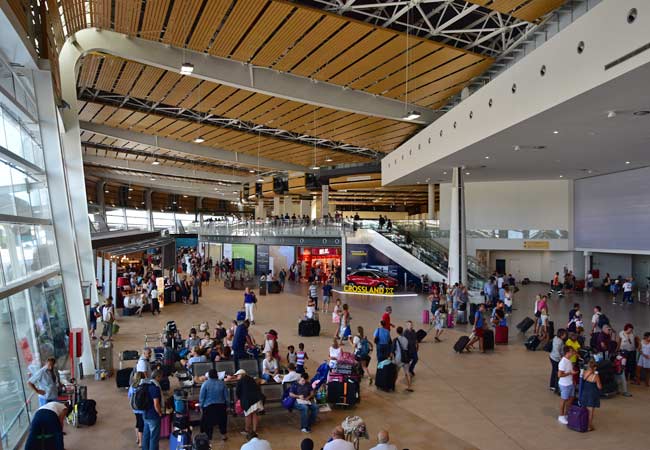
oh we were stuck in the airport!

Copenhagen was a bit expensive...

All we did was drink beer in Brussels...
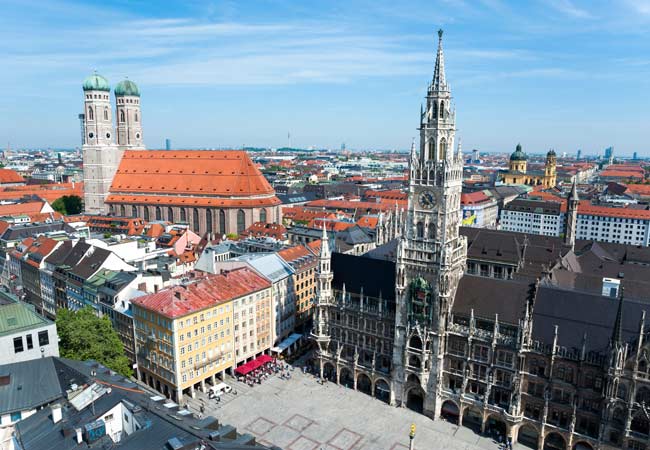
Muncih was crazy

And we got so burnt!
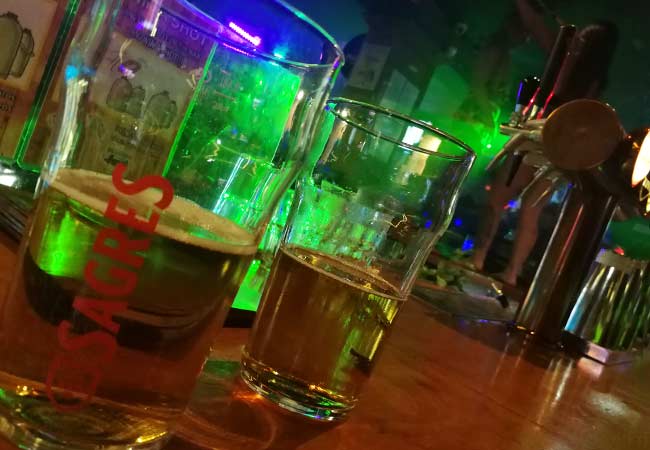
Remeber that night in Rome

oh we were stuck in the airport
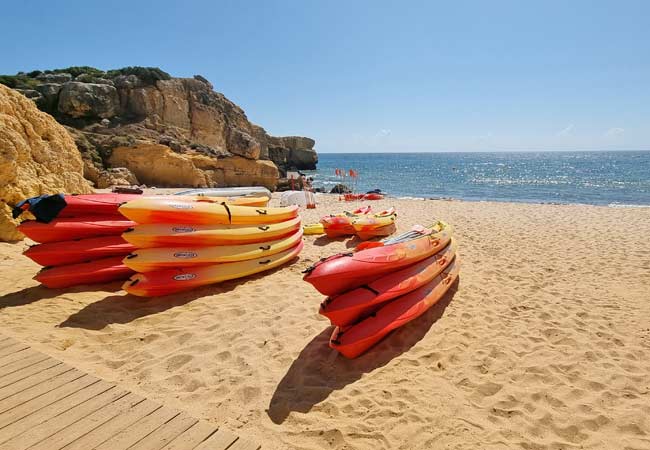
So much fun kayaking

Berlin and that group from Austria!

There was such a view from that church

And we got so burnt!

Munich was eventful, wasn't it!

Such a view from that cathedral in Florence
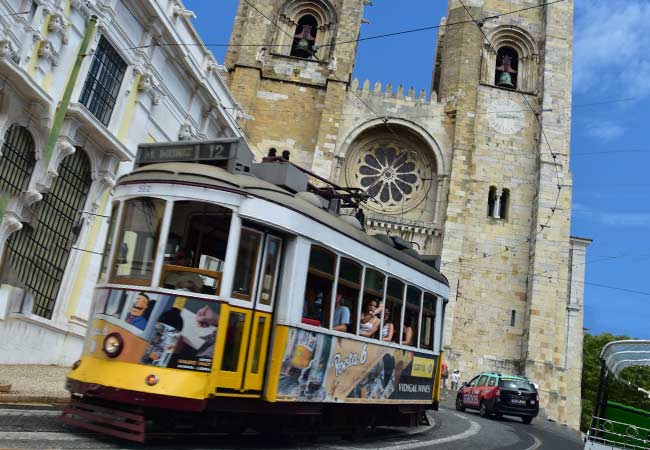
Lisbon was such so much fun

Last summer was so much fun .... x

Remeber that night in Rome

Lisbon was such so much fun

Such a view from that cathedral in Florence

Munich was eventful, wasn't it!

And we got so burnt!

Remeber that night in Rome

All we did was drink beer in Brussels...

Berlin and that group from Austria!

Can't wait to go back to Dubrovnik

Remember that boat ride in Prague

Copenhagen was a bit expensive...
